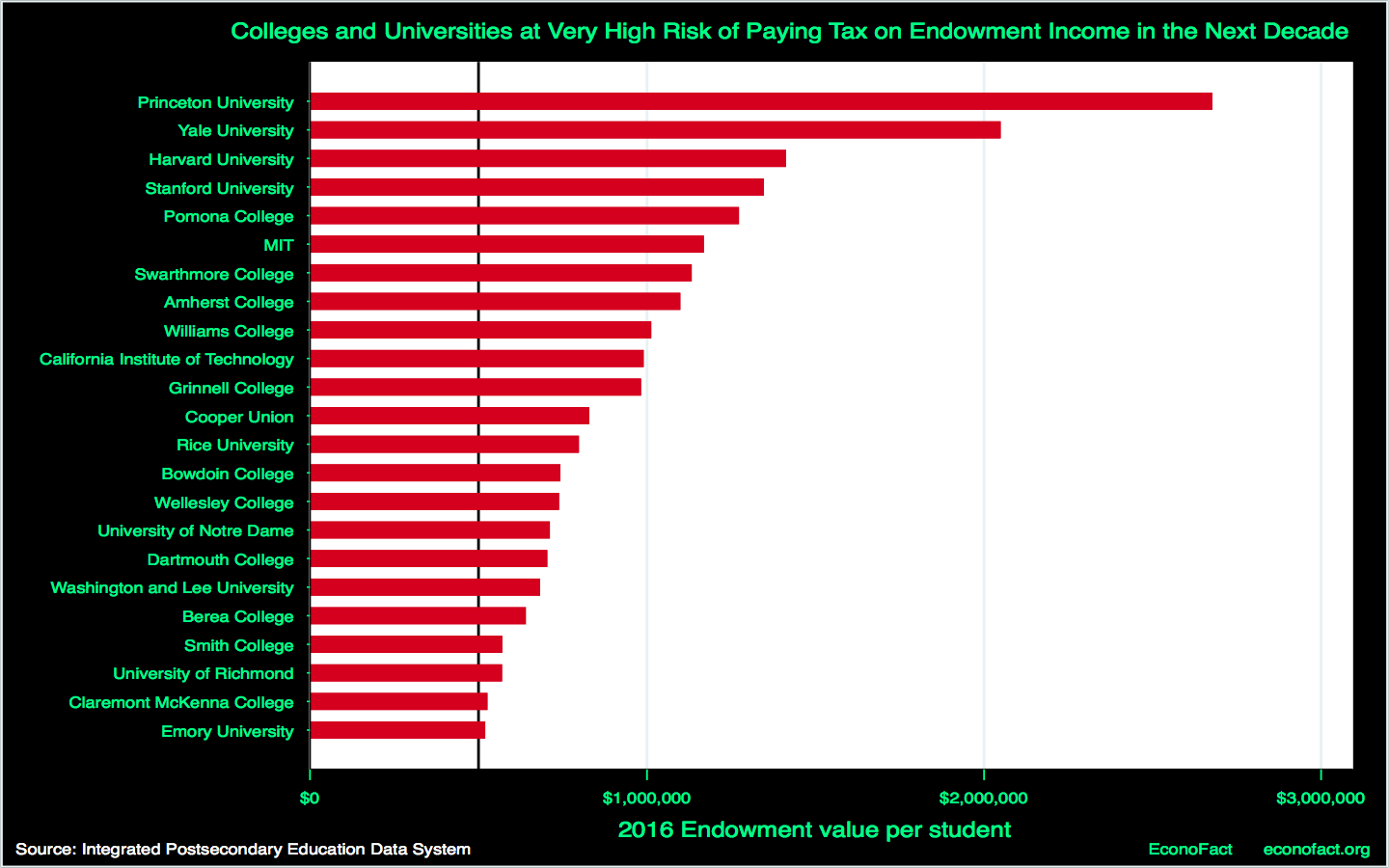FAFSA Simplification: How New Rules Will Change the Price of College
April 18, 2023
Roughly two-thirds of students will have greater eligibility for financial aid. But some could see a sizable, unexpected increase in cost.
April 18, 2023
Roughly two-thirds of students will have greater eligibility for financial aid. But some could see a sizable, unexpected increase in cost.
March 22, 2018
Geographic location is important in determining not just where, but whether, a high school senior goes on to college. About 1 in 6 lack a nearby college.
January 25, 2018

The recently enacted federal tax legislation levies a tax on the endowment income of colleges and universities with large endowments.
(This is an interactive graph. Hovering over the dots reveals institution names.)
May 30, 2017
How much would a college education really cost? Schools are making it easier to answer this question and it may make a big difference for low-income students.